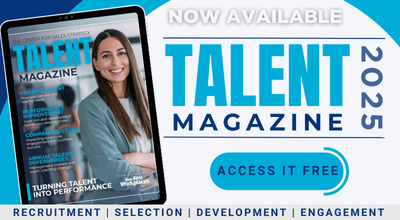
Most companies scale back recruiting in response to a financial crisis. Did you know that 1 of the 3 most effective responses is to hire top performers from the competition?
Companies looking to hire the best talent should pay attention to these recruiting trends we’ve seen in 2021 and what it means for future years.
5 Recruitment Trends to Watch
 The cornerstone of any successful organization is talent.
The cornerstone of any successful organization is talent.
Building a talent bank ensures that you're not talent-poor. A rich talent bank ensures you have at any time, a stable of qualified, vetted, and potential candidates for key roles.
Savvy leaders are consistently looking for talent to deposit into their talent bank, so they have access to a rich pool of candidates.
1. Virtual Recruitment is Here to Stay
A recent LinkedIn study found that 81% of talent professionals agree that recruitment will continue to be done virtually post-COVID.
70% say this will be the new standard.
In response, strong recruitment and screen tools are critical assets in building your talent bank.
2. More Flexible Work Options
There’s a lot out there on hybrid work, remote work, and employees leaving because they want more flexible work options. We're in a period dubbed ‘The Great Resignation’.
Organizations that made sudden or transitional shifts to work from home, or work from anywhere environment, are now faced with a workforce that has found this model can be effective. According to Monster research, remote flexibility was the second biggest policy change reported by employers in 2020.
In addition to job flexibility, many organizations are taking a second look at the standard 9 to 5 workday and even the 5-day work week.
The past 16-months have brought front and center (often on Zoom or Teams calls) parents juggling children (who were also, schooling from home) and other real demands most adults juggle.
Organizations are realizing that attracting top talent will require pro-active and, at times, creative ways for employees to balance the ever-elusive ‘work-life balance. If you're interested in more insights into the changing workplace, check out these tips on the changing workplace environment.
3. Greater Focus on Onboarding
In my role in sales, one of the cornerstones of our work with potential clients in identifying a true value proposition.
How can we demonstrate and articulate value? The same concept is translating over to addressing employee needs.
As part of the Employee Value Proposition (EVP), companies will need to establish a solid onboarding process that begins with pre-boarding. Before new hires show up for their first day, either in the office or online, keeping a connection to the candidate turned employee is critical for the first 90 days of employment.
Did you know that 83% of candidates say it would greatly improve the overall experience if employers provided a clear timeline of the hiring process?
When I started with the Center for Sales Strategy, I was frankly stunned by the level of immediate engagement from the moment we agreed to work together.The thoughtful and deliberate process through my first 90 days has made the transition insightful; it has made me more effective as a leader.
If you're curious about some effective ways to onboard, check out this plethora of resources on getting the right start for your team. One of my favorites, and topical and meaningful right now, is our virtual onboarding checklist.
Onboarding Resources:
- The Ultimate Guide to New Employee Onboarding
- The 3 Phases of Onboarding
- Resources That Are Helpful to Your New Hire
- What New Hires Want During Onboarding
4. Improving Employer Brand
When we think about organizations that get it right, one of the topics that bubbles up in my mind immediately is brand reputation.
Say a name of a company in your industry to a group of peers, often by the gasp, sigh, smile, or immediate comment; you can garner the brand reputation.
This affects not only employee engagement for your current talent, but it can also have a major impact on your recruitment efforts. Three-quarters of job seekers consider the reputation of a company before applying and refuse to take the next step if the reputation isn’t strong.
77% of adults evaluate a company’s culture BEFORE applying for a job and 46% will hold out for a strong culture.
Want to determine what your culture looks like? Pop over to Up Your Culture's self-inventory checklist that will give you insight into key areas to evaluate for engagement and culture.
Companies are taking stronger stances on current events and focusing on brand. Perks, benefits, social issues, equity, employee engagement, and culture have a deep impact on the effectiveness and authenticity of the message.
5. More Internal Hiring and Development
Where will your next great hire come from?
More than ever future hires will come within the company. In an increasingly tight talent market, realizing the benefits of internal hiring can reduce the onboarding process. Internal recruitment can also address a critical area of importance for employees —the opportunity for advancement.
59% of employees specifically changed jobs last year to further increase their development opportunities. There are many benefits to hiring right from the start and nurturing your talent bank within an organization. Institutional knowledge alone is a critical and valuable soft corporate asset.
If you're curious about some more of the benefits of internal recruitment, you can access a great resource here.
Our 2021 Talent Magazine is a definitive resource for any leader to understand the changes, challenges, and best practices to building, enriching, growing, and leading in the competitive talent search.



